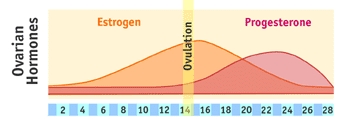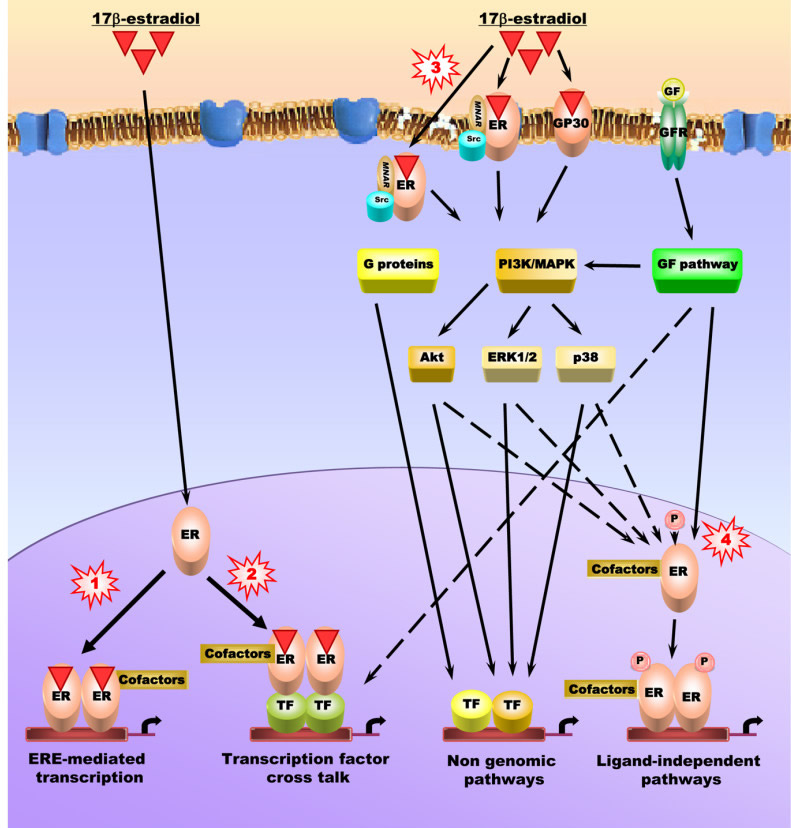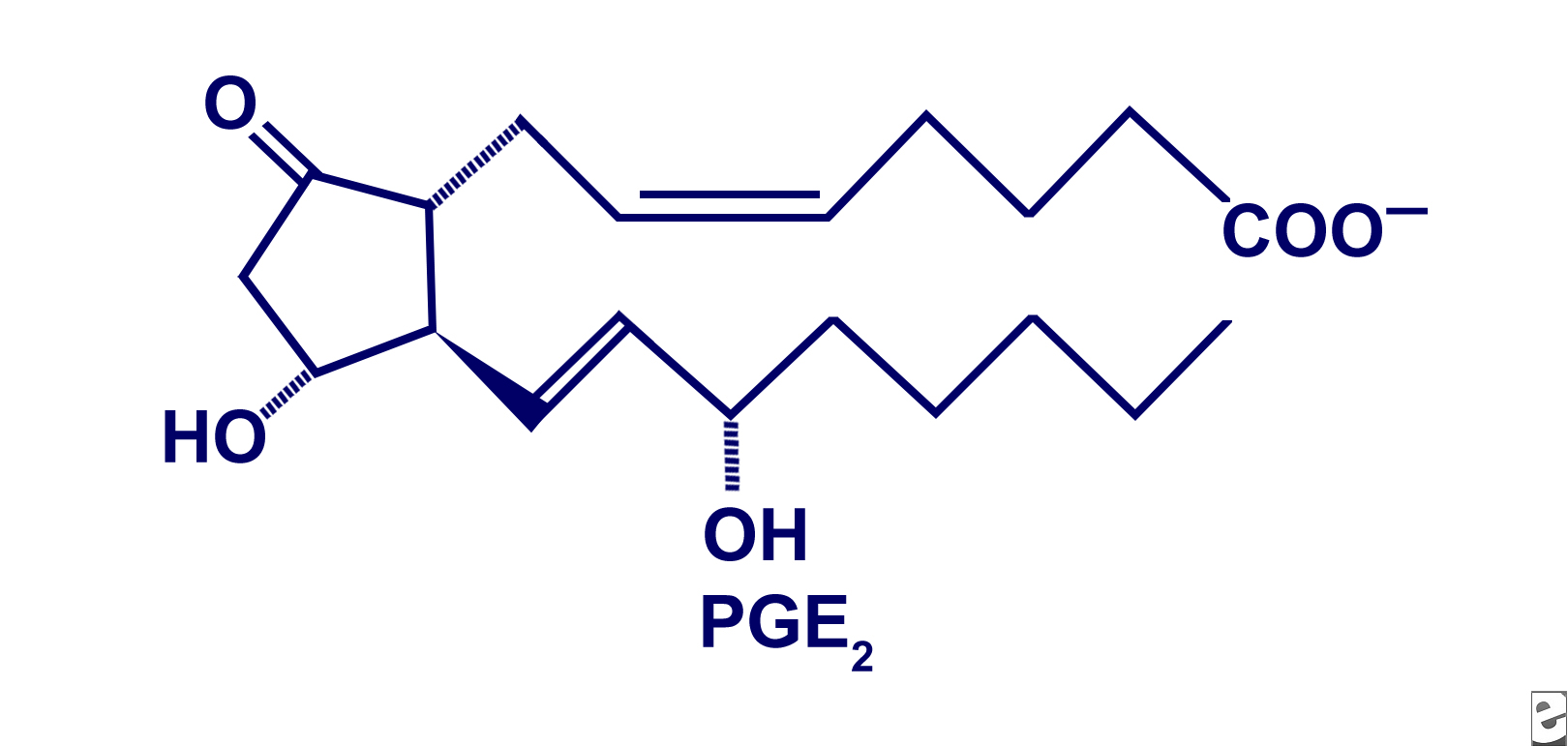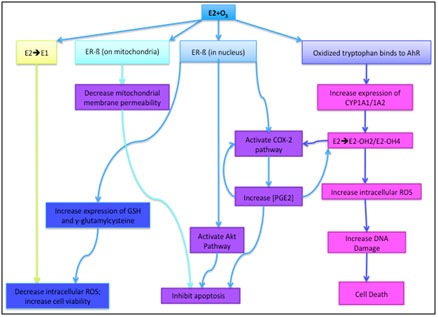Effects of Estrogen (E2)
General
Research Question
I am examining the combined effects of estrogen and ozone on lung cells to
determine if estrogen alters lung cell susceptibility to ozone induced
oxidative damage.
Indicators that Estrogen plays a
role in lung disease pathogenesis
|
Estrogen and Lung Disease
- Gender
descrepancies in the morbidity / mortality of lung disease and
response to oxidative stress in healthy patients
- ARDS
- Women
have higher survivorship than do men of simillar health (Moss et al
2002).
- Lung
cancers
- Adenocarcinomas
account for 3/4 of all types of lung cancers in women but only 1/3 of
all lung cancers in men (Omoto et al. 2001; Dougherty et al 2006).
- Women
may respond better to surgical removal of tumor (Lai et al. 2005).
- Lung
cancer causes more female deaths than breast, ovarian, and cervical
cancer combined
- Asthma
- Boys
under the age of 15 are more likely to go to the hospital for an
asthmatic attack than are girls (Schatz et al. 2006).
- Response
to oxidative stress in healthy
subjects
- Some
studies suggest that men have significantly greater antioxidant
capactiy, or ability to protect against oxidative damage, than women;
however, other studies have shown that women have increased levels of
8-iso-PGF – a molecule that mitigates oxidative damage – when exposed
to ozone (Chen et al. 2007)
|
Increased Exposure to Estrogen
- Majority
of estrogen exposure is the result of the ovarian cycle
- Lifestyle
changes have increased estrogen exposure
- Hormone
replacement therapy
- Increases
the time period women are exposured to high levels of estrogen
- Obesity
- Increases
the amount of estrogen that both men and women are exposed to
- Adipose
cells produce estrogen
|
An Overview of
Estrogen
|
Estrogen, the Molecule
- Generated
by the aromatization of androgens in several different tissues (Zhu et
al. 2005; Chang et al. 2007; Lin et al. 2003; Hayes et al. 1996).
- 2
main forms
- 17-β
estradiol (E2) = biologically active and reduced form of estrogen
- Estrone
(E1) = biologically inactive and oxidized form of estrogen (Zhu et al.
1998; Abplanalp et al. 1999).
|

Image from http://www.nature.com/nchembio/journal/v2/n4/compound/nchembio
775_comp2.html
Figure 1. Chemical
structure of 17-β estradiol (E2)
|
|

Image from http://www.womentowomen.com/menopause/estrogendominance.aspx
Diagram of E2 levels throughout the ovarian cycle
|
Estrogen
in the Body
- Both
estrogen and its receptors are present in both males and females,
although at gender specific concentrations
- Post-menopausal
women and men have similar levels of estrogen (Lai et al. 2005;
Dougherty et al. 2006; Si et al. 2001).
- Responsible
for the development of female sexual characteristics
- Role
in the Ovarian cycle
- Produced
by ovaries during days 1-14 of the menstral cycle to stimulate
ovulation (Sadava et al. 2008)
|
|
Estrogen
in the Cell
- Induce
cellular changes by ….
- Binding
to its receptor in the cytoplasm, forming a transcription factor that
can alter gene expression (a genomic response)
- Binding
to receptors on either the plasma and/or organelle membranes to
increase second messengers, increasing the activity of other proteins
(a non-genomic response)
- Effect
may differ based on cell type or concentration
|

Image from http://arthritis-research.com/content/11/5/241/figure/F3?highres=y
|
Estrogen and Oxidative Stress
|
Potential to Reduce Oxidative
Stress
- Estrogen
is an antioxidant
- E2
can donate H+ early in the propagation of free radical chain reaction,
thus protecting cells from oxidative damage (Ayres et al. 1996;
Angoa-Perez et al. 2006; Si et al. 2001).
- E2
has greater antioxidant capabilities than E1 and cells
decrease the conversion of E2 to E1 in
response to oxidative stress (Zhu et al. 1998;
Abplanalp et al. 1999).
- Estrogen
and Glutathione
- Estrogen
increases both the expression of Glutathione and γ-glutamylcysteine in
response to oxidative stress via Estrogen Receptor β (Erβ) (Russo et
al. 2005; Urata et al. 2006).
|
Potential to Exacerbate Oxidative
Stress
- E2
Metabolism
- Some
E2 metabolites (E2-OH2 and E2-OH4) = potentially carcinogenic (Ho et
al. 2008; Hayes et al. 1996; Chang et al. 2007; Zhu et al. 1998; Lin et
al. 2004).
- E2
meabolism can cause quinone recycling, increasing the number of free
radicals in the cell (Zhu et al. 1998).
- Cytochromes
P450 1A1 / 1A2 / 1B1 are all involved in E2 metabolism, specifically
conversion to E2-OH2 and E2-OH4 (Ho et al. 2008; Hayes et al. 1996; Lin
et al. 2004)
- Bindingto
the Aryl hydrocarbon Receptor (AhR) upregulates the expression of
cytochromes p450 1A1 and 1A2 (Zhu et al. 1998; Sindhu et al. 1999;
Hayes et al. 1996; Chang et al. 2007; Lin et al. 2004).
- Ligandsfor
AhR
- 2,3,7,8-tetrachlorodibenzo-p-dioxin (TCDD), found in
cigarette smoke, has been shown to bind to AhR in lung cells (Lin et
al. 2004)
- Oxidized
tryptophan has also been shown to bind to AhR in liver cells (Singhal
et al. 2009).
|
|

Image from http://emedicine.medscape.com/article/126919-overview |
Potential
to Inhibit Apoptosis
- Apoptsis
= programmed cell death
- Caspase
proteins must be activated for apoptosis to occur
- E2
can decrease mitochondrial membrane permeability via interactions with
receptors on mitochonrdria
- Prevents
cytochrome c release and subsequent caspase activation (Felty et al.
2003; Miyaguchi et al. 2004).
- E2
can activate Akt pathway via interactions with ERβ
- Prostaglandin
E2 (PGE2)
- PGE2
is associated with increased inflammation and apoptosis inhibition in
epitheliall cells (Hazra et al. 2007; Stenson 2007).
- E2
may increase PGE2 expression via activation of the COX-2 pathway (Lu et
al. 2004; Kim et al. 2007; Chang et al. 2007; Bloomberg 2000)
|
|
Net Effect of E2 and Ozone induced-oxidative
stress is unknown
- In
combination, E2 may
act as a cytoprotectant, acting directly as an antioxidant or indirectly
by increasing the expression of glutathione
- The
combination may increase oxidative damage via E2 metabolism
- The
combination may
inhibit apoptosis via interactions with mitochondria, increasing the
expression of inflammatory molecules like PGE2.
We are working to characterize the alveolar cells system and test these
hypotheses. |

|


